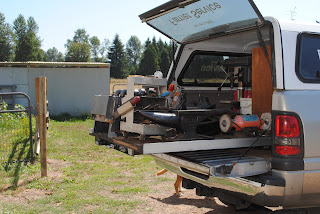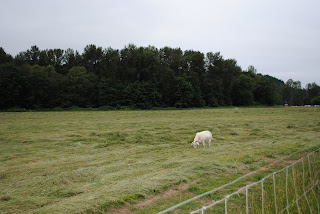Cuties Arrive
These girls stand almost waist high, and weigh around 200 to 250 pounds. Their heads look too big for their bodies, their ears are wonderfully hairy and they have skinny legs and the cutest, tiny little feet. Both of these girls are teenagers and can live up to 50 years.
They are my official Barnyard Ambassadors and have free run of my enclosed barnyard. They both fit nicely into one stall. When they arrived on the ranch the horses ran for the far ends of their pastures. The girls ignored them, but no horse was willing to chance a close encounter, even if these two were close relatives. Both horses and donkeys are equines. At dinner time I lead the girls into their stall and then brought the horses in as usual. There was much snorting, huffing and head tossing,, but all the horses made it in without being eaten by a donkey!
The day came when Jenny and Tullee felt enough at home to open their little mouths-----and let loose! That sent the horses running again, but not as far, they were growing used to their smaller relatives. But when they let loose, it's a wonder how that much noise can come out of those little mouths.
Did you know that burros and donkeys are the same animal? In the southern United States and into Mexico they are called burros. Up here they are miniature donkeys. These creatures have an amazing ability to carry a heavy load up steep terrain for many miles. They are also easy keepers, requiring little food. For breakfast I give Jenny and Tullee one flake of hay. For dinner they each get 1/2 a cup of rolled oats, 1/2 a scoop of Horse Guard, an equine vitamin mineral supplement, and 1 tablespoon of ground flax seed.
Every morning, when they see me coming across the yard to their gate, they greet me with a duet. It's a great way to start any day!





















